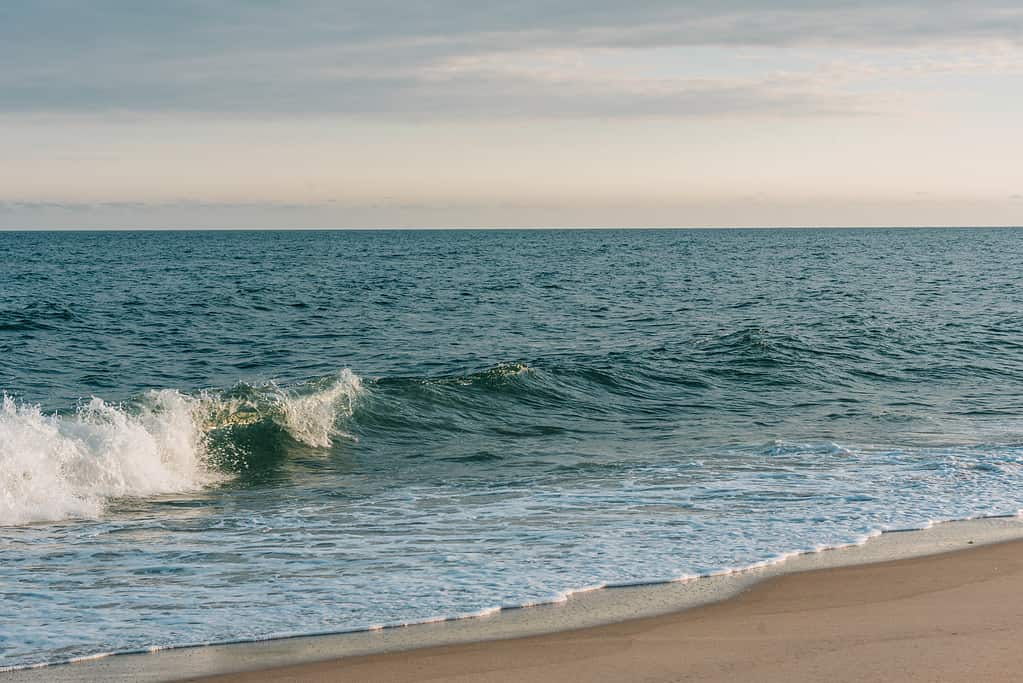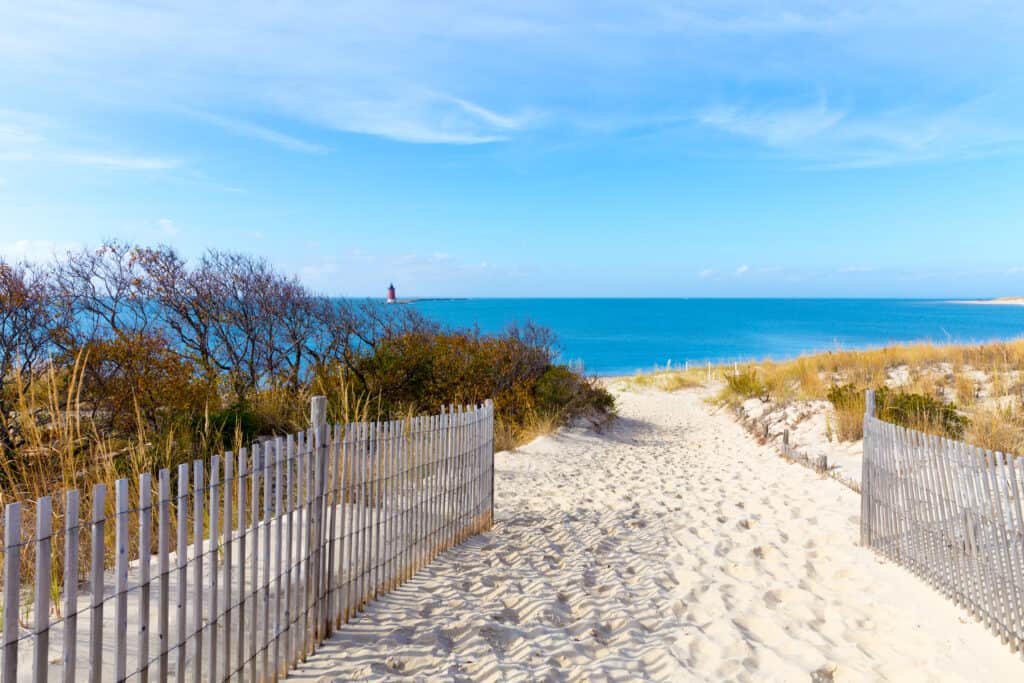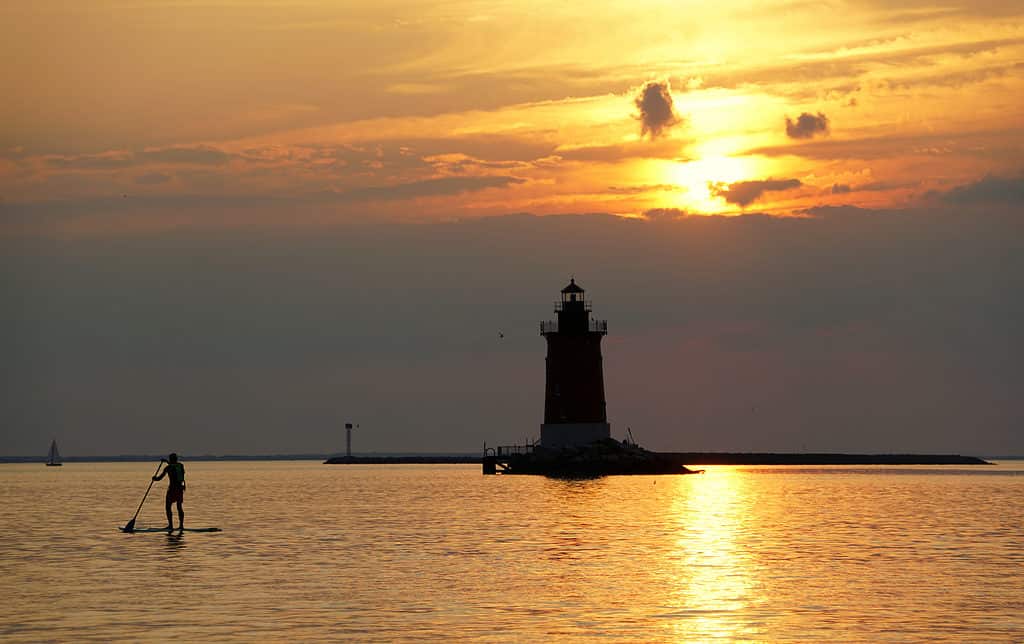The coastal state of Delaware is bordered by Pennsylvania to the north, New Jersey, the Delaware Bay, and the Atlantic Ocean to the east, and Maryland to the south and west. Planning on a visit to this maritime state? If you’re traveling to the Blue Hen state, you may be wondering where the lowest point in Delaware is and if you can visit this area.
Read on to learn about this beautiful Mid-Atlantic state and some of the best spots to visit that are situated at sea level.
The Lowest Point in Delaware
Situated within the Mid-Atlantic on the East Coast, the Delaware River in the north of the state flows into the Delaware Bay, which opens into the Atlantic Ocean.
The entire state of Delaware has an elevation of less than 500 feet above sea level. Most of the state is characterized by flat coastal plains and low, gentle hills. Delaware claims the lowest mean elevation of all U.S. states at 660 feet above sea level. Its highest point, at 447.85 feet above sea level, is situated at a brass benchmark called Ebright Azimuth.
At the state’s lowest point where the coastline meets the Delaware Bay and the Atlantic Ocean, the elevation is 0 feet above sea level.
The Lowest Point in Delaware: The Atlantic Ocean
The youngest of the five world oceans, the Atlantic Ocean was formed approximately 150 million years ago during the Jurassic Era. The second-largest Ocean on our planet, this massive body of water formed as a result of the breakup of the supercontinent, Pangaea. Scientists began formulating this plate-tectonic theory of the Atlantic Ocean’s origin in the late 19th century. Today, the Atlantic Ocean covers one-fifth of the Earth’s surface and accounts for 29% of the world’s water.

The Atlantic Ocean was formed about 150 million years ago.
©Jon Bilous/Shutterstock.com
Delaware’s Coastline
Along the coast of Delaware, the shallow waters of the Atlantic host a breathtaking array of marine life. Marine mammals such as bottlenose dolphins, humpback whales, sperm whales, pilot whales, orca, and the North Atlantic right whale can all be seen at various times of the year cruising through these coastal waters. Magnificent sharks such as great whites, smooth dogfish, sand tiger, sandbar, and Atlantic mako sharks migrate through and spend their lives off the Delaware coast.
A host of sea and shorebirds also call this coastline home. Species include the endangered red knot, ruddy turnstone, semipalmated sandpiper, ring-billed gulls, black-legged kittiwake, and Bonaparte’s gull. Some of these birds, especially the red knot, are attracted to this coastline due to the influx of horseshoe crabs that spawn in great numbers on small stretches of Delaware’s beaches.

Bottlenose dolphins are one of the many spectacular marine animals you may see on a trip to Delaware’s coastline.
©Tory Kallman/Shutterstock.com
The Lowest Point in Delaware: The Delaware Bay
In addition to featuring miles of stunning ocean coastline situated at sea level, Delaware is also home to the Delaware Bay. This bay is the estuary outlet that borders the Delaware River to the north and the Atlantic Ocean to the south. In this area, freshwater from the Delaware River mixes with saltwater from the Atlantic Ocean.
The bay serves as a nursery, spawning, and feeding ground for a range of fish species. In this estuary, you’ll find a mix of fresh and saltwater species. These include the clearnose skate, Atlantic croaker, white perch, striped bass, summer flounder, and the endangered Atlantic Sturgeon. Saltwater fish are especially common in the southern area of the bay where the waters are saltier.
You can also visit some wonderful bay-side beaches along Delaware’s coast. We’ll cover a couple of fantastic locations for swimming, watching wildlife, and enjoying all that coastal towns have to offer.

Atlantic
Sturgeon
are found throughout the Delaware Bay and even travelling up the Delaware River.
©AdaCo/Shutterstock.com
Can You Visit the Lowest Point in Delaware?
Since the state borders the Atlantic Ocean, you’ll be able to visit its lowest elevation by taking an ocean-side trip. Many public beaches dot this coastline. There, locals and tourists alike enjoy the sandy coastline and lovely waters of the Atlantic. About 10 million people visit these lovely beaches each year.

The lowest points in Delaware are where the coastline meets the Atlantic Ocean and Delaware Bay.
©iStock.com/ymn
The Lowest Point in Delaware: Ocean and Bay-Side Beaches
Below, we’ll talk about the best ocean and bay-side beaches to visit if you’re itching to visit Delaware at sea level. These beaches and the parks they’re situated in offer a wide array of family-friendly activities and ecotourism opportunities.
Fenwick Island State Park
The southernmost beach is Fenwick Island State Park. It offers three miles of lovely ocean and bay coastline and is situated within 344 acres. Visitors can swim, sunbathe, surf, hunt for shells, and stroll along the boardwalk. You may even spot some dolphins swimming in the waves in the early morning or at dusk.
This state park features a bathhouse with showers and changing rooms, a gift store, and a concession stand. Lifeguards are present from 9 a.m. to 5 p.m. from the last weekend of May through the last weekend of August. Visitors can rent umbrellas, chairs, and rafts. There is also beach access that is wheelchair accessible.
Slaughter Beach
If you’re interested in peace and quiet, less shopping, and more wildlife, Slaughter Beach is an excellent choice. Instead of packed boardwalks and shopping, horseshoe crabs, endangered red knot shorebirds, and other wildlife are the stars of this beach.
This strangely named beach, situated a few miles north of where the Delaware Bay and Atlantic Ocean meet, features both private and public access. You can find public parking and beach access to this area along Marvel Road. While this beach is less tourist-oriented, a small bathhouse is available for public use during the summer.
Locals and historians debate the origin of its grizzly name. Some claim the name traces back to the town’s first postmaster, William Slaughter. Another theory suggests that the name comes from early settlers attacking indigenous tribes whose ancestral homelands include Slaughter Beach.
Others point to an event in spring and early summer in which thousands of horseshoe crabs make their way to Slaughter Beach to spawn. Waves flip over many of these arthropods. Unable to right themselves, they perish from the heat of the sun. Some call this event the “Slaughter of the Crabs”. However, many contest this origin. This is since several creeks, roads, and other areas of the town, Slaughter Beach, also have “slaughter” in their name.
The town currently only hosts 200 residents and a couple of businesses. So, it seems highly plausible that the beach’s name would trace back to this tiny area’s first postmaster.
Cape Henlopen State Park
If you’re looking for an amazing mashup of nature-oriented activities and an energetic, touristy atmosphere for your Delaware beach adventure, Cape Henlopen State Park is a must-see.
This park encompasses a massive 5,193 acres filled with over 6 miles of coastline. While you can of course partake in all of the usual beach activities and bathhouse amenities, this park also offers biking trails, a sand dunes walking trail, the Seaside Nature Center, incredible sunrise views, an observation tower, a fishing pier, and a boardwalk above stunning salt marshes. Finally, you can rent kayaks and paddleboards to traverse the bay and even visit the East End Breakwater lighthouse.
Wildlife abounds in this area. This includes horseshoe crabs, shorebirds, seals, dolphins, and a delightful range of critters that live in tide pools. If exploring tide pools is your jam, Cape Henlopen State Park is an excellent choice. Low tide on the Delaware Bay side of the park creates several stunning tide pools and sand bars.

Cape Henlopen State Park is an incredible destination for wildlife viewing, swimming, biking, kayaking, paddle boarding, and more.
©Khairil Azhar Junos/Shutterstock.com
The photo featured at the top of this post is © Zach Chilelli/Shutterstock.com
Thank you for reading! Have some feedback for us? Contact the AZ Animals editorial team.







